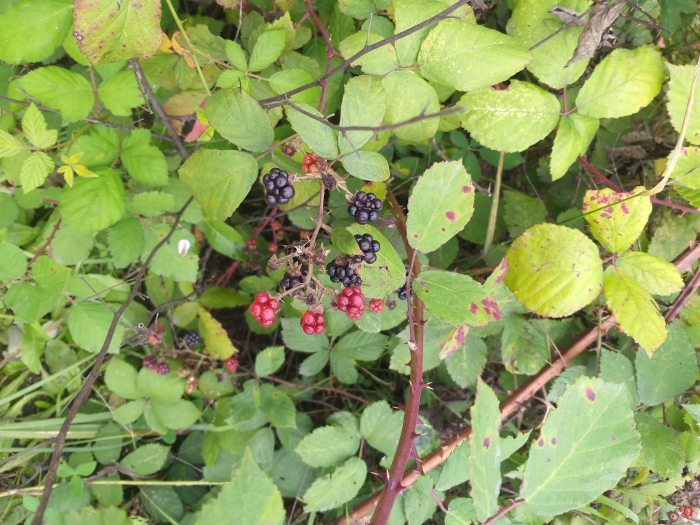European Blackberry
(Rubus fruticosus)
European Blackberry (Rubus fruticosus)
/
/

© Dmitriy Bochkov
CC BY 4.0

























Estimated Native Range
Summary
The European blackberry is valued for its fruit, which is used in culinary applications such as jams, desserts, and wines. Its dense thicket-forming habit makes it suitable for use as a natural barrier or hedge. In cultivation, it prefers well-drained soils, tolerates a range of soil types, and requires full sun to part shade for optimal fruit production. However, its aggressive growth and ability to root from stem tips make it a challenging plant to control. It is susceptible to fungal diseases such as rust and can become a nuisance if not managed properly. Due to its invasive nature, it is important to consult local regulations before planting.CC BY-SA 4.0
Plant Description
- Plant Type: Shrubs
- Height: 1-10 feet
- Width: 4.9-10 feet
- Growth Rate: Rapid
- Flower Color: White
- Flowering Season: Summer
- Leaf Retention: Deciduous
Growth Requirements
- Sun: Full Sun, Part Shade
- Water: Medium
- Drainage: Fast, Medium
Common Uses
Bird Garden, Edible*Disclaimer: Easyscape's listed plant edibility is for informational use. Always verify the safety and proper identification of any plant before consumption., Erosion Control, Showy Flowers
Natural Habitat
Native to open woodlands, forest edges, hedgerows, and coastal areas across Europe
Other Names
Common Names: Blackberry , Wild Blackberry , Bramble Blackberry , Shrubby Blackberry , Wild Blackberry Complex , European Blackberry , Brambleberry
Scientific Names: Rubus fruticosus , Rubus affinis , Rubus dumosus , Rubus fruticosus , Rubus fruticosus var. fruticosus , Rubus interfoliatus , Rubus plicatus subsp. typicus , Rubus plicatus var. apricus , Rubus teutobergensis
GBIF Accepted Name: